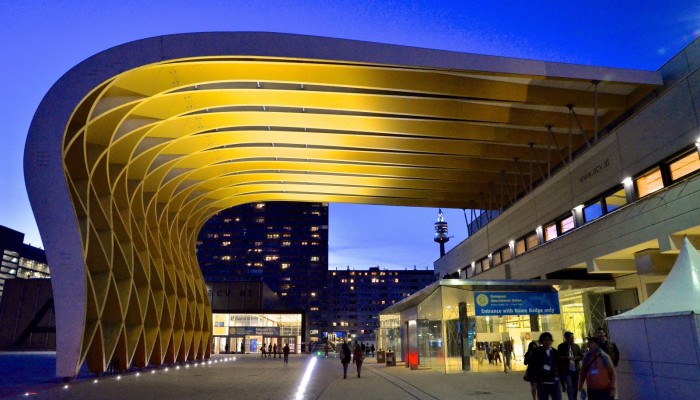
Last week the 2018 General Assembly were held in Vienna. Gathering 15 075 scientists from 106 countries, this is the most important EGU event throughout the year. Summarizing what happened during the week is an impossible task, as a meeting like this is way more than the 666 individual sessions convened and the 11 128 posters presented during the week. However, in this post I will point to some of the ST Division specific highlights.
This year, spring came to Vienna together with EGU. Many of us therefore used this excellent opportunity to stay outside in the sun to relax or explore the beautiful medieval city, in between the busy meeting schedule. However, the main activities happened inside the Austria Center Vienna.
During the Solar-Terrestrial Division meeting, Theresa Rexer was announced as the new Early Career Scientist (ECS) representative in the division, taking over from Jone Peter Reistad. She will continue the ongoing efforts to make the General Assembly even more relevant for students and researchers in the early stages of their career. During the General Assembly, the Solar-Terrestrial ECS team held the session “Meet the Experts: The Future of Solar Terrestrial Research”, for the fourth year in a row. The session was very well attended (78 participants) and the invited speakers did an excellent job in reviewing important challenges and topics relevant for ECS to embark upon in the near future, covering topics from the Sun to the magnetosphere, ionosphere, and its coupling with the atmosphere.
This year we had three medal awardees in the ST division. Ilya Usoskin received on the Monday the Julius Bartels medal for his “key contributions to long-term changes of cosmic rays and solar activity, qualifying him as a founder of the space climate discipline”. The next day Eckart Marsch received the Hannes Alfvén medal for “fundamental contributions to our understanding of the kinetic processes and plasma turbulence in the heliosphere, as well as for work that helped HELIOS become a successful mission and initiated the Solar Orbiter.” Finally, Natasha L. S. Jeffrey received the Division Outstanding Early Career Scientist Award for “her outstanding achievements in improving the standard model of fast electrons produced in solar flares, thereby eliminating the long-standing low-energy cut-off uncertainty.” (citations are from https://www.egu.eu/awards-medals/).
In the Solar-Terrestrial Division, a total number of 34 session were held, making up a varied program within most of the disciplines of our division due to all the contributions and efforts from the community. I can only say that I look very much forward to the meeting in Vienna next year!
